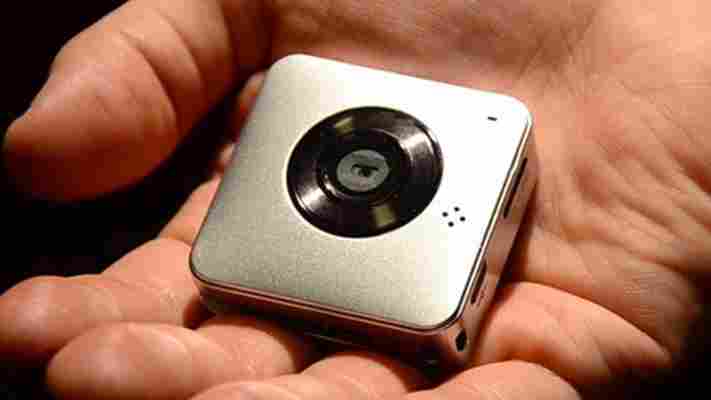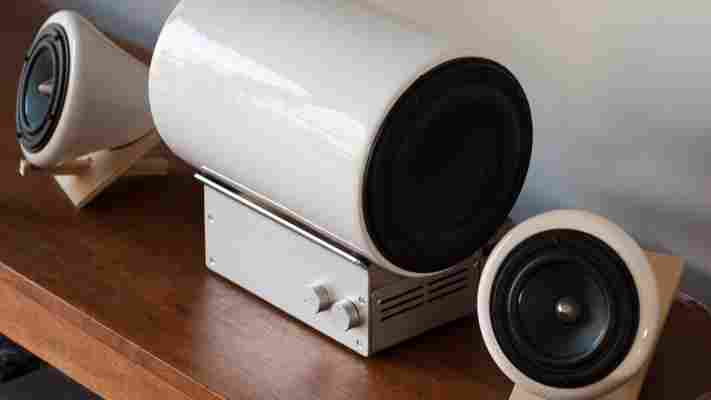The team behind ParaShoot, a wearable photo and video device, has switched its efforts to raise funding over to Indiegogo after its Kickstarter project was abruptly suspended with two weeks of campaigning left.

The news is a huge blow for ParaShoot, which had easily surpassed its $30,000 goal after raising $117,358. That Kickstarter campaign was meant to be second-time lucky for the team, after it failed to hit a lofty $260,000 target months earlier.
Now, it starts again, hoping that third time’s the charm .
To recap, the ParaShoot is a Go Pro -style wearable gadget that records HD video and snaps HD photos on the fly. It comes with clips and mounts, and is aimed at making life’s important moments instantly recordable, without a rush for a phone or camera.
ParaShoot co-founder Matt Sandy tells TNW that the company got no warning of its suspension from Kickstarter, and it isn’t clear why action has been taken against:
The cut-off means ParaShoot has no way of contacting the 751 backers who pledged money towards its latest campaign, although they are likely aware of the situation since Kickstarter emailed all backers on Friday to inform them of the project’s suspension. All money pledged on Kickstarter will be returned in full.
The Indiegogo campaign — playfully dubbed ‘ParaShoot 2.1’ — is seeking the same figure of $117,358 that had been raised in the second Kickstarter campaign. It uses the same pricing but with more features on offer for prospective owners.
Early backers can get a device for $149, a big discount on the future consumer price of $269, while two are up for grabs for $290. The ParaShoot 2.1 is set to ship from December 2013, with a $15 surcharge for overseas delivery.
We contacted Kickstarter for further details about ParaShoot’s suspension.
➤ ParaShoot [Indiegogo]
Also read: Planning a Kickstarter campaign? Read this first
Images via ParaShoot
These $1,000 ceramic speakers from Joey Roth are the “anti-Jambox” approach
With very few exceptions, speakers are designed to be somewhat utilitarian devices. But what happens when a designer just happens to also have a passion for superior audio? You get Joey Roth, and his ceramic speakers ; a $1,000 audio product that sounds every bit as exceptional as it looks. I’ve had the pleasure of testing Roth’s new creation, a speaker set with a subwoofer, and so it’s time to tell you about his project that is designed to fly in the face of the typical market direction.

Roth describes his approach as the “anti-Jambox/Beats” method. Both in form and function, Roth’s directive was to design a set of speakers that not only use all natural materials but also don’t interfere with the audio at any level. To start, he layers ceramic into a thickness that prevents the speaker housings from flexing (cabinet flex is the natural enemy of sound waves), he then caps the backs with cork and uses a custom birch wood stand to display them.
The subwoofer is a single 6-inch driver, with a passive radiator on the opposite side (that means that only one side is powered, but the unpowered “speaker” allows for more air movement, thus more sound). You’ll notice that it’s also powered by its own amplifier, complete with crossover and volume knobs. I asked Roth about the decision to not do a singular volume control and his answer was in line with his design philosophy:
What’s perhaps most surprising is that Roth managed to pack an amplifier that provides 15 watts per channel inside of a minuscule box that sits on your desktop (or dresser, or where ever you choose to use the system). The subwoofer is provided with 50 watts in a single channel. The clarity of the amplifier is unlike almost anything that I’ve heard in over 20 years of testing and owning high-end audio systems.
So let’s talk more about that sound. The first thing that you need to know is that this system, while not difficult to use, requires a bit more involvement from its user than most others. Because there are separate crossover and volume controls for the subwoofer, switching between musical styles will often require you to do minor adjustments in order to get optimal sound.
But that sound is worth the effort. Everything that I threw at the ceramic speakers, from the most pounding of electronic and rap, to delicate strings and punchy jazz was handled without any flaw. I have absolutely no reservations in saying that Roth has designed and built a set of speakers that are positively in the top three of any that I’ve ever heard. What’s important to note, however, is that the two that I’d rate above Roth’s creation will cost you no less than $5,000. With that in mind, Roth’s ceramic speakers are the absolute best that you’ll find in this price range.
The decision to be made is how serious you are about the music to which you listen. You can find cheaper systems that sound just fine, but that’s exactly the problem — Music, as an art form, deserves more than “just fine”. Roth’s passion for art, combined with a desire to display the artwork of others in the best way possible, has led to an exquisite set of speakers that are every bit as much art as they are science. If you’re serious about sound, and about making a long-term investment in getting the best audio possible, then you owe it to yourself to give Roth’s creation your attention.
Apple sold 33.8m iPhones and 14.1m iPads in Q4 2013, up 25.7% and up 0.7% year-over-year respectively
During the earnings announcement for its fiscal fourth quarter of 2013, Apple revealed that it sold 33.8 million iPhones and 14.1 million iPads. According to those figures, the company’s iPhone sales were up 25.7 percent year-over-year while its iPad sales were up 0.7 percent year-over-year.

Last quarter, Apple sold 31.2 million iPhones and 14.6 million iPads , but of course the only fair comparison worth making is year-over-year. In Q4 2012, Apple sold fewer phones and fewer tablets than this quarter: 26.9 million iPhones and 14 million iPads.
Q4 2013 industry estimates for iPhones ranged between 32.67 million and 34.22 million while estimates for iPads ranged between 14.51 million and 13.26 million. Apple thus easily beat estimates for iPhones but failed to do the same for iPads.
More specifically, Apple managed to beat both the institutional consensus and the independent one when it comes to its hottest gadget, but its tablets were somewhere in the middle. While this isn’t an ideal result, it’s certainly a positive one: the iPhone line is definitely more important than the iPad one for the company, and it did just get refreshed with the iPhone 5s and iPhone 5c .
Many tablet consumers meanwhile were likely waiting for the company’s October iPad event. Now that the iPad Air and the iPad mini with Retina have been announced, the real test for Apple will be this current quarter.
Overall, Apple is still impressively selling more devices than the comparable quarter last year, despite increased competition from the likes of Google and Microsoft. Unfortunately, the company as always didn’t offer numbers for specific types of devices (iPhone 5 versus iPhone 4S or iPad versus iPad mini), so it’s impossible to see which ones are performing better or worse.
See also – iPad Air vs. iPad 4: What has Apple changed? and iPad mini with Retina vs. iPad mini: What has Apple changed?
Top Image Credit: Wang Zhao/Getty Images
